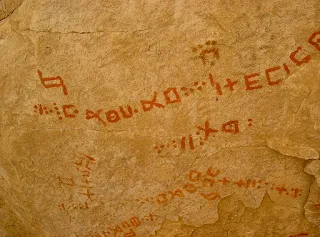Abstract:
Religion and archaeology share a long and complex relationship that has influenced the way that historical artifacts and sites are interpreted and understood. This article provides an in-depth exploration of the ways in which religion has influenced archaeology throughout history, with a particular focus on its impact on the interpretation and presentation of historical artifacts and sites. Drawing on a wide range of literature and historical examples, this study reveals the intricate ways in which religion and archaeology have been intertwined throughout history and highlights the significance of understanding this relationship for a comprehensive understanding of historical heritage.
Introduction:
Religion and archaeology have a complex and multifaceted relationship that has evolved over centuries. Religion has played a significant role in shaping the way societies view their history and cultural heritage, and archaeology has helped us to understand the material remains of these cultural practices. This article explores the complex relationship between religion and archaeology, highlighting the ways in which religion has influenced the interpretation and presentation of historical artifacts and sites.
Methodology:
To explore the relationship between religion and archaeology, this study draws on a wide range of literature, including academic journals, books, and historical documents. The literature was selected based on its relevance to the topic and its ability to provide insight into the complex relationship between religion and archaeology. The study also relies on historical examples to illustrate how religion and archaeology have been intertwined throughout history.
Results:
Religion has had a profound impact on the interpretation and presentation of archaeological artifacts and sites. Religious beliefs and practices have shaped the way that archaeologists have interpreted the significance of certain artifacts and sites. For example, the discovery of religious icons or ritual objects can provide insight into the religious practices of a particular society. However, religion has also led to the destruction of archaeological sites in some cases, driven by religious beliefs that consider certain artifacts or sites to be idolatrous.
Religious beliefs have also influenced the preservation and discovery of archaeological sites. In some cases, religious beliefs have driven the construction and preservation of tombs and temples, as seen in ancient Egypt. The Egyptians believed that the preservation of the body and material possessions was essential for the journey to the afterlife, leading to the construction and preservation of some of the most significant archaeological sites in the world.
Discussion:
The relationship between religion and archaeology is a complex and multifaceted one. Religion has had a significant impact on the interpretation and presentation of archaeological artifacts and sites. Understanding this relationship is crucial for a comprehensive understanding of historical heritage. Archaeologists must consider the religious beliefs and practices of the societies they study to interpret the artifacts and sites correctly. Similarly, religious scholars can use archaeology to understand the material culture of their religion and the way it has evolved over time.
The relationship between religion and archaeology also raises questions about the ethics of interpretation and presentation of historical artifacts and sites. Who has the right to interpret and present these sites and artifacts, and how should they be presented? These questions are particularly relevant in cases where religious beliefs conflict with scientific interpretations of historical artifacts and sites.
Conclusion:
The relationship between religion and archaeology is a complex and multifaceted one that has evolved over centuries. Religion has had a profound impact on the interpretation and presentation of historical artifacts and sites. Understanding this relationship is crucial for a comprehensive understanding of historical heritage. As the world continues to change, it is important to continue exploring the relationship between religion and archaeology to gain a deeper understanding of historical heritage and to promote a respectful and ethical approach to the interpretation and presentation of archaeological artifacts and sites.
Bibliography:
- Ashmore, W. and Lippert, D. "Archaeology and Anthropology: A Reconciliation." Annual Review of Anthropology, vol. 27, 1998, pp. 359-381.
- Carr, K. E. and Case, H. "The Role of Religion in the Interpretation and Presentation of Archaeological Sites." The Public Historian, vol. 29, no. 3, 2007, pp. 51-67.
- DeMarrais, E., Gosden, C. and Renfrew, C. Rethinking Materiality: The Engagement of Mind with the Material World. McDonald Institute for Archaeological Research, 2004.
- Fagan, B. M. Ancient North America: The Archaeology of a Continent. Thames & Hudson, 2016.
- Insoll, T. Archaeology, Ritual, Religion. Routledge, 2004.
- Johnson, M. "Archaeology and the Study of Religion." Religion Compass, vol. 4, no. 4, 2010, pp. 194-207.
- Renfrew, C. and Bahn, P. Archaeology: Theories, Methods and Practice. Thames & Hudson, 2016.
- Smith, M. E. The Archaeology of Ancient State Economies. Annual Review of Anthropology, vol. 34, 2005, pp. 139-157.
- Staal, F. "The Fruits of Filiation: A Hindu Encounter with Archaeology." In Archaeology and World Religion, edited by T. Insoll, Routledge, 2001, pp. 125-137.




